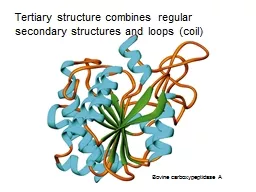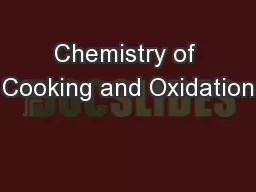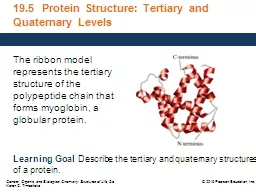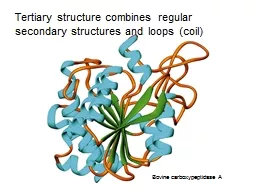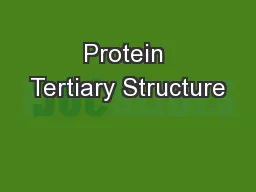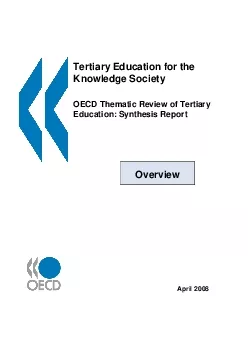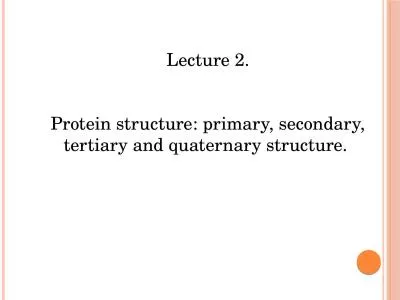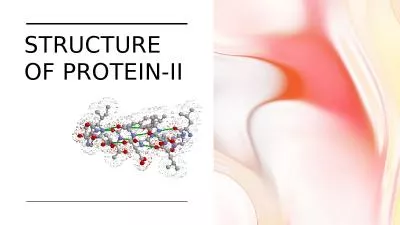PPT-Tertiary structure combines regular secondary structures and
Author : ellena-manuel | Published Date : 2018-10-12
loops coil Bovine carboxypeptidase A Figure 628 Tertiary structures may contain common patterns or motifs of secondary structures supersecondary structures
Presentation Embed Code
Download Presentation
Download Presentation The PPT/PDF document "Tertiary structure combines regular seco..." is the property of its rightful owner. Permission is granted to download and print the materials on this website for personal, non-commercial use only, and to display it on your personal computer provided you do not modify the materials and that you retain all copyright notices contained in the materials. By downloading content from our website, you accept the terms of this agreement.
Tertiary structure combines regular secondary structures and: Transcript
Download Rules Of Document
"Tertiary structure combines regular secondary structures and"The content belongs to its owner. You may download and print it for personal use, without modification, and keep all copyright notices. By downloading, you agree to these terms.
Related Documents

